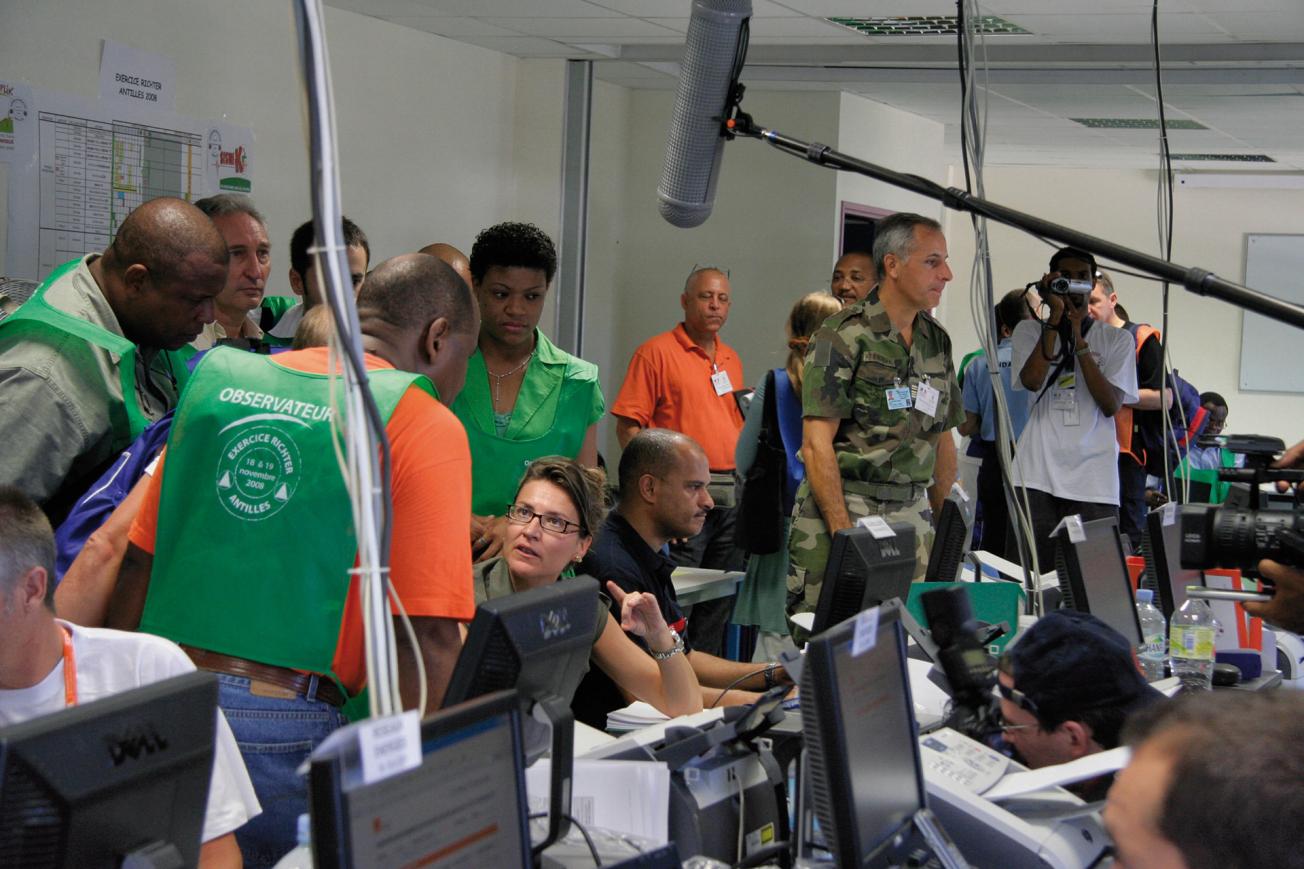
Richter exercise in the Caribbean: observers and evaluators at the DIRANIM crisis simulation Centre during the assessment of the exercise.
© BRGM - Séverine Bès de Berc
Richter exercises have been launched under the 2005-2010 Earthquakes Plan. They are organised on the scale of one or several départements and involve all local operational players in charge of managing events of this type.
About a dozen exercises have been conducted, in overseas France (Martinique and Guadeloupe) and in several risk-prone areas in mainland France (Alsace, Haute-Savoie, Hautes-Pyrénées).
Crisis management preparedness
Should a major earthquake occur, prefectures, devolved government agencies, local government bodies and emergency operators all have to be capable of handling major damage to infrastructure and networks as well as human injuries and fatalities and emergency shelter for those who have lost their homes. It is therefore essential to raise their awareness as to the actual damage an earthquake can cause in their area and to prepare them to deal with it, during the acute phase but also in the aftermath.
The exercises last for 8 to 36 hours and are based on realistic earthquake scenarios. These are developed from current knowledge (seismological context, vulnerability of buildings, etc.) and datasets that include quantified and spatialised assessments of damage to people and property, in order to assess the response and intervention capabilities of the players concerned.
The scenarios are built up to reflect specific aims and concerns expressed by operational players ahead of the exercise. The exercises, which cover phasing, information delivery and real-time analysis of responses, are designed to test all existing procedures, improve these if required and identify any gaps, in order to achieve decisions that are coherent overall.







